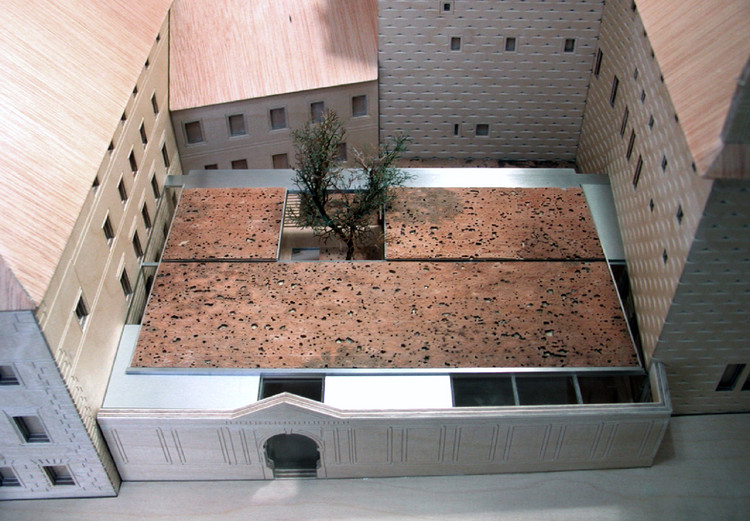
Architects: Mateo Arquitectura / Josep Lluís Mateo Location: Prague, Czech Republic Project Year: In Progress Project Area: 1,500 sqm Photographs: Courtesy of Mateo Arquitectura
After winning the Restricted Competition in 2004 the construction of the new central access to the National Gallery in Prague began in late 2009 and works are ongoing, it will be completed by the end of this year.
The Court as a Secret Garden

The sequence of courts, organized by the sum of the palaces (Salm and Schwarzenberg), and the small wing house, builds a beautiful urban front toward the access plaza of the Castle. Each court provides different qualities like being opened to the street and the representation of the access as in the case of Salm Palace, or closed but with a certain monumentality as in the case of the Schwartzenber Palace. In our case, the court is hidden by the wall, and naturalistic with herbs and a great tree. We wish to consolidate this space by using the atmosphere of a secret garden. The court is limited by the old facades. Our construction should continue using them like limits of the space.
Space Between Earth and Sky (Building the Floor and Roof)

If the vertical limits already exist, our intervention will suppose to work with the horizontal limits of the space: the floor, the superficial layer of the earth, and the ceiling, the border that separates us with the sky. The space is the gaseous fluid that moves among these limits. The floor is a topography that moves subtly to facilitate the access to the two neighboring palaces. The ceiling is built with a metallic structure with minimum and precise encounters with the edges.
The Secret Garden

The roof, the court that collects the water and the green limits toward the Schwarzenberg Palace articulate, in a subtle way, the organic life in the place. Preserving the existing wall without almost any intervention has seemed fundamental to insist in this argument.
Structural Concept

The structure of the National Gallery of Prague’s access roof is composed by three longitudinal frames and nine secondary orthogonal beams. Each of the main frames have two steel columns and the two ends are supported by the existing façades.
















